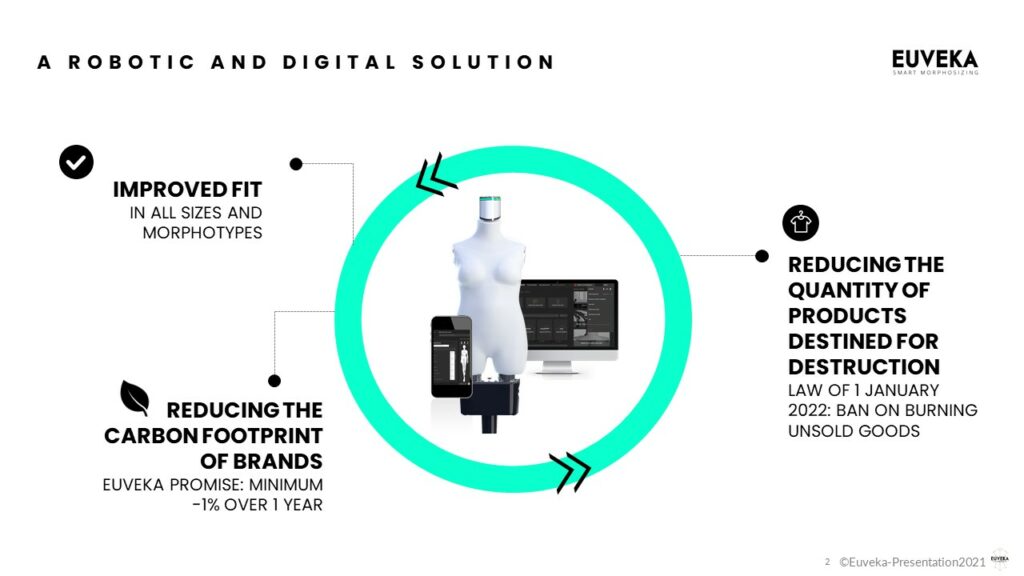For decades, models were constructed from wooden mannequins for Ready-to-Wear, whereas Made-to-Measure was based on the actual proportions of a human body, in this case, the buyers.
The advantages of Made-to-Measure are numerous, ranging from fit to the selection of materials with the stylist to arrive at a unique piece that gives complete satisfaction to the customer, who has spent time with a professional to acquire an optimal garment that will last longer.
In the ready-to-wear sector, for years, it was a matter of going through measurement tables, statistical gradations updated every ten years.
With the help of mannequins and the accumulated experience of model makers, fashion has continued to spread across borders to new markets, with different morphologies, but without always taking them into account.
In addition, the rapid growth of the world’s population and changes in eating habits have contributed to the fact that these pre-established models no longer correspond to the morphologies of the buyers. Over the past 20 years, the arrival and development of fast fashion has resulted in buyers being drowned in a multitude of gradations, each reflecting a different idea of the customer. The number of garments produced and never worn has continued to grow due to this broken link between “who is my customer” and “what can/wants to wear my customer”.
The result is the ecological impact we are currently experiencing, which will be the subject of a separate article.
To make fashion fit you so well, the use of morphological data has become a real necessity.
In the age of the Metaverse and 3D, all in a pandemic context, the robot mannequin reflects at least a triple desire:

All this is good, you may say, but what is a robot mannequin and how is it better than a classic mannequin?
The Robot-Mannequin
It has special features that allow it to be adjusted to check sizes, prototypes in all gradations so that brands can perform beyond their base sizes, but also in all other morphologies allowing designers and pattern makers to do their work more efficiently.
The main features are as follows:
– Adjust the robot according to your grading rules. This is a “Lord of the Rings” mode where a dummy is used to govern them all.
– The dummy is available 24 hours a day and is a perfect alternative to cabin dummies which are not always available. The robot mannequin ensures that all your products can be tested and their measurements verified in a minimum of time.
– Thanks to its technology, the robot mannequin also allows you to reproduce the size of your other products and to ensure the consistency of the size and gradation grids, season after season.
– Finally, as with any high-tech solution, your data can be exported for analysis to highlight measurement discrepancies and identify garment flaws prior to production launch.
– From a brand’s perspective, this is a great way to improve sustainability and inclusion. And with the data collected, it is also an opportunity to reduce their logistics and production costs.
The classic mannequin
Whether it’s made of wood or covered in canvas, the wooden mannequin has satisfied generations of designers, and let’s be honest, it has a noble and solemn side. Nevertheless, the classic mannequin is what it is: static, non-adjustable and the main flaw is that it does not reflect a real human body. Like a statue, it embodies an idea of a body onto which different clothes can be fitted.
The development and testing of “size sets” on such mannequins contribute to the uselessness or impossibility of selling certain products. Indeed, as long as your body is within the norm and you remain in the most common sizes, you have a good chance of finding the right shoe, or rather the right shirt for your bust.
However, as soon as you move towards sizes such as XS or 3XL+, it often happens that the clothes don’t fit you, too tight, sleeves too long or too short, difficulty to close the buttons at the chest level… or simply, that the garment doesn’t fit you or doesn’t please you anymore once worn because you don’t like it.
At a time when facial recognition is becoming commonplace and digitization is going full steam ahead, it seems that producing sizes well is based more on a desire by brands and manufacturers to use modern tools than on a compulsion to develop solutions themselves.
The robot mannequin thus appears to be a means of responding to society’s evolutions and challenges.
Brands and distribution networks continue to expand worldwide and taking into account different morphologies is mandatory.
A poorly designed product is a product that will never be sold. It will nevertheless have been adjusted, produced and therefore consumed natural resources. Worse still, it will have been transported, placed in a shop… all to end up indefinitely in stock.
Outre l’impact économique, c’est aussi un large impact en termes environnementaux, et ces impacts sont supportés par les marques, les distributeurs et les consommateurs.
Disposer d’un robot mannequin permet aux marques de pouvoir exploiter les bibliothèques de données propres à Euveka. C’est alors aller au plus près des morphotypes de chaque cliente. C’est inclure les morphologies des femmes du monde entier pour faire en sorte que les produits de chaque taille soit achetables et portés plus longtemps. Le mannequin Euveka permet aussi une inclusivité de toutes les personnes travaillant sur les vêtements et de réduire la pénibilité grâce à la suspension intégrée. Aujourd’hui, plus que jamais, les marques peuvent faire que la mode vous aille bien.
Euveka est une société française disposant d’une technologie brevetée, de 8 ans de Recherche et Développement et dont l’objectif affirmé est de rapprocher les marques de leurs marchés grâce à son mannequin robot.